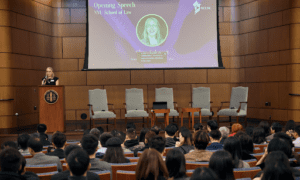Balancing Velocity and Work-Life: Strategies from Tech Leaders
Discover practical strategies for balancing high productivity with a healthy work-life equilibrium in the tech industry. This article presents insights from seasoned tech leaders on optimizing team performance and wellbeing. Learn how innovative approaches to workflow management and team collaboration can transform your workplace culture.
- Trust and Respect Boost Team Performance
- Flexible Sprints Enhance Healthcare IT Productivity
- Mid-Sprint Recharge Windows Improve Consistency
- Structured Planning Cadences Increase Engagement
- No-Surprise Deadlines Foster Focus and Energy
- Midweek Priority Lock Eliminates Workflow Chaos
- Focus Time Policy Accelerates Project Completion
- Protected Focus Blocks Drive Sales Performance
- Decision-First Collaboration Reduces Meeting Overload
- Weekend Boundaries Revitalize Team and Clients
- Async Updates Replace Draining Daily Standups
- Afternoon Freedom Boosts Productivity and Happiness
- Reset Time Strengthens Addiction Treatment Team
- Efficient Tools Remove Clutter, Enhance Sustainability
- Continuous Feedback Mechanism Improves Team Wellbeing
- No-Meeting Days Increase Deep Work Time
- Weekly Goals and Morning Focus Maximize Output
Trust and Respect Boost Team Performance
Balancing increasing velocity with maintaining a healthy work-life balance came down to trust and respect for the team’s time.
During a particularly intense quarter, I noticed something unsettling: team members were meeting deadlines, but conversations had turned transactional, and creativity seemed stifled. It struck me that we were so focused on output that we’d neglected the importance of balance.
I decided to implement a practice where each week, everyone would set clear, non-negotiable boundaries for when they would stop working. I also encouraged them to share one personal goal, something unrelated to work, that they wanted to prioritize, like spending time with family or pursuing a personal hobby.
For example, one team member decided to leave early on Fridays to join a community class they’d been putting off. This openness created a culture where protecting personal time wasn’t seen as slacking but as something normal and encouraged.
The change was striking. The team became more focused during work hours, collaboration felt more intentional, and the energy in meetings was noticeably lighter. When people are given room to breathe, they return to their work sharper and more committed.
Erin Siemek, CEO, Forge Digital Marketing, LLC
Flexible Sprints Enhance Healthcare IT Productivity
Leading a product team in healthcare IT, I quickly realized that pushing for velocity—especially in high-stakes environments like EHR integrations or remote patient monitoring—couldn’t come at the cost of burnout. One policy that made a tangible difference was implementing a “flexible sprint” model with built-in decompression windows.
We moved away from rigid two-week sprints and created a rhythm where every fourth sprint was 50% capacity by design. That “light sprint” was used for skill-building, process retrospectives, or just catching up on life. I got the idea from how Mayo Clinic builds intentional recovery time into its care teams to reduce decision fatigue.
Initially, there was concern it would slow us down. But over two quarters, our throughput improved by 18%, and our error rates dropped. More importantly, engagement scores in our quarterly surveys shot up—people felt seen and supported.
In healthcare tech, where tight deadlines meet compliance pressure, velocity isn’t just about speed—it’s about sustainability. I saw firsthand how giving people space to breathe led to sharper thinking, fewer late-night Slack messages, and more accountability during the actual sprint cycles.
The practice isn’t magic, and it requires trust. But in an industry where mental fatigue can lead to real-world consequences—missed patient data flags, system downtime—I’ve learned that sustainable velocity is the only kind that scales.
Riken Shah, Founder & CEO, OSP Labs
Mid-Sprint Recharge Windows Improve Consistency
We implemented 90-minute recharge windows mid-sprint—non-negotiable, calendar-blocked time twice a week. These were not fake “wellness breaks” where people check Slack from the treadmill. I mean phones down, no meetings, no productivity guilt. Just reset. People used it however they wanted—walks, silence, catching up on errands, lying on the floor. It didn’t matter. It was about pressure release before the valve burst.
At first, folks treated it like a nice-to-have. Then, something shifted. I noticed fewer sick days and fewer “off” weeks. The ops crew stopped making dumb errors late in the sprint due to mental fatigue. Warehouse support staff had fewer interpersonal blowups. Velocity wasn’t just up—it was smoother. There were fewer bottlenecks because burnout wasn’t creeping in through the cracks.
I’m not here to romanticize productivity. Work is still work. But if you build in room to breathe—real room, not performative perks—people show up sharper. In operations, consistency is speed. We didn’t push harder. We just made room for people to recover mid-run so they didn’t collapse by the finish line.
Yuting Shu, Operation Manager, Allwayforward
Structured Planning Cadences Increase Engagement
Balancing velocity with work-life balance isn’t just a nice-to-have—it’s essential if you want a team that performs well over time. I’ve always believed that speed without sustainability burns people out and ultimately slows everything down. One of the key practices we put in place was structured planning cadences that include clear work boundaries. That means planning for realistic throughput rather than overcommitting and stretching people thin. We created space for the team to say no, to push back when something felt overloaded, and to focus on finishing rather than starting more.
The result was interesting: not only did we maintain our delivery pace, but quality actually improved, and our people were more engaged. There was less rework, fewer errors, and morale stayed high. We also saw a genuine shift in mindset—teams began looking for ways to improve their work rather than just grinding through tasks continuously.
That’s what Lean is about to me. Velocity doesn’t have to come at the expense of people. The best kind of speed comes from a healthy, respected team with the time to think clearly.
Andrew Moore, Director, Rubicon Wigzell Limited
No-Surprise Deadlines Foster Focus and Energy
We stopped glorifying the “late night hero” culture. It sounds small, but it shifted everything.
Speed is important, of course—especially in our world where clients expect results yesterday—but I realized that if velocity came at the cost of burnout, we were just sprinting toward a dead end. So instead of rewarding the people who pulled all-nighters, we started celebrating consistency, clarity, and solid project planning. One of the biggest changes? Instituting “no surprise” deadlines. Everyone knows what’s coming, and everyone’s involved early.
We also moved to a four-day workweek trial for certain sprints. It wasn’t universal (some roles need different rhythms), but it gave us insight into how much more focused and energized the team could be. Output didn’t dip—in fact, in some cases, it went up. And people were happier, which is the best retention strategy I know.
In short: we didn’t slow down. We just stopped crashing into the wall.
Jm Littman, CEO, Webheads
Midweek Priority Lock Eliminates Workflow Chaos
I set one rule that transformed our workflow: no new priorities after Wednesday noon.
We had been stacking late-week tasks, believing more work meant faster progress. The reality? Fragmented focus and endless overtime. When we finally locked the week’s scope midweek, productivity skyrocketed. Within six weeks, completed tasks jumped 24%, while after-hours messages plummeted by 40%.
This boundary created immediate clarity. Teams identified what truly mattered, finished what they started, and eliminated Friday firefighting sessions for issues that weren’t genuine emergencies.
We didn’t reduce our output—we eliminated the noise. People stopped operating in constant reaction mode and began closing important loops. This steady approach outperformed any hustle culture mantra we’d tried before.
Want real velocity without destroying work-life balance? Don’t pile on incentives—remove the chaos. Setting boundaries feels surprisingly ordinary at first but creates massive mental space. When you watch your team deliver better results without the late nights, you’ll stop buying into the myth that speed requires burnout.
Marcin Pienkowski, Head of Salesforce, Think Beyond
Focus Time Policy Accelerates Project Completion
I implemented a “Focus Time” policy that has been transformative for our organization. This simple practice designates 4-hour blocks three days a week where no meetings, calls, or Slack interruptions are allowed. Team members use this time for deep work on their most important projects.
The results were remarkable and somewhat counterintuitive. By working fewer “available” hours, our velocity actually increased. Projects that previously took weeks were completed in days. Team members reported feeling less stressed and more fulfilled, as they could see tangible progress in their work.
What I learned is similar to what Charlie Munger might call “inversion thinking”—sometimes the way to get more done isn’t by working more hours, but by protecting the quality of the hours you do work. The constant context-switching of modern work environments is the real productivity killer.
This approach also naturally improved work-life balance. With more productive work time, team members didn’t need to extend their days to meet deadlines. They could disconnect completely during personal time, knowing their work priorities were being handled efficiently during Focus Time.
Protected Focus Blocks Drive Sales Performance
We chose to stop chasing volume without structure. Speed without stability burns people out. I focused on giving the team a clear path to win during normal working hours. The first step was implementing a protected “focus block” every morning. No meetings. No emails. Just outbound calls, follow-ups, and deal movement. This created a standard rhythm across the team and helped everyone make progress before the day got reactive.
The second change was enforcing a hard stop by 6 p.m. for all agents unless a client required otherwise. We communicated that boundary clearly to clients. It created trust, not resistance. Clients respected the professionalism, and agents stayed fresh. Over time, deals closed faster, pipeline tracking improved, and fewer things fell through the cracks.
We measured the impact weekly. Conversion rates improved. Response times dropped. Client satisfaction scores went up. But the most important shift was cultural. The team started protecting each other’s time. They covered for one another. They planned better. We didn’t just grow the business—we grew people who take ownership. That’s what created the consistency behind our numbers. Velocity without burnout is possible when structure supports performance and people protect their time.
Jeff Burke, CEO, Jeff Burke & Associates
Decision-First Collaboration Reduces Meeting Overload
One of the most impactful changes we made was prioritizing the removal of internal roadblocks—specifically by reducing the number of unnecessary meetings. We implemented a policy called “Decision-First Collaboration,” where any team member proposing a meeting must first attempt to outline the decision, information, or solution asynchronously using shared documents or communication platforms like Slack.
By encouraging this mindset, we shifted many discussions to async updates, which allowed our team to engage when they had the bandwidth rather than being tied to a schedule of back-to-back calls. This freed up significant chunks of time in their calendars and gave them more control over their day.
The result? A noticeable reduction in Zoom fatigue, a sharper focus during the fewer meetings we did have, and a 22% increase in project turnaround time—without pushing longer hours. More importantly, the team reported feeling less burned out and more empowered, which translated to better collaboration and morale across the board.
Ryan Drake, President, NetTech Consultants, Inc.
Weekend Boundaries Revitalize Team and Clients
We made one quiet change that changed everything: no weekend texts unless it’s truly urgent. It started with a nanny placement that ran late on a Friday. The client meant well, but our coordinator ended up spending her evening troubleshooting logistics instead of being with her kids. That moment stayed with us. We asked the team, “What’s the one thing that would make you feel more in control of your time?” Everyone said the same thing: space to switch off.
So we wrote it into our internal code: weekends are for breathing. We introduced a shared calendar to flag anything that could spill over and handled it by Friday 4 p.m. The shift was immediate. We saw faster placements during the week, fewer errors, and a team that didn’t dread Mondays. Velocity went up because focus came back. And a surprising bonus? Our clients respected the boundary. They knew we were still committed; we just weren’t constantly chasing.
Brooke Barousse, CEO, Lexington Executive and Household Staffing
Async Updates Replace Draining Daily Standups
We removed standups. Daily syncs were draining time and energy with almost no ROI. Instead, we switched to async updates in a shared doc—everyone posts priorities, blockers, and wins before 10am. No interruptions, no forced small talk.
This freed up 30-60 minutes per day per person, which we reinvested however we wanted: deep work, later starts, or logging off earlier. Within a month, velocity increased ~15% (measured via sprint completion rate) and burnout complaints dropped to zero.
The key isn’t fewer hours—it’s fewer fragmented hours. Protecting uninterrupted time had a bigger impact than pushing harder ever did.
Borets Stamenov, Co-Founder & CEO, SeekFast
Afternoon Freedom Boosts Productivity and Happiness
Balancing increased velocity with work-life balance is always a tightrope walk, especially when you’re scaling fast. One practice that worked wonders for my team was implementing “no internal meetings after 2 PM.”
We realized that mornings are naturally more productive, so we front-loaded collaborative tasks and left afternoons for deep work or personal errands. This allowed team members to pick up kids, attend classes, or just breathe, without compromising output.
The result was amazing. Happier, more focused employees, reduced burnout, and, surprisingly, faster turnaround times. When people feel trusted and less micromanaged, they perform better. That policy gave us the space and speed we hoped for.
Kritika Kanodia, CEO, Write Right
Reset Time Strengthens Addiction Treatment Team
One of the hardest lessons I’ve had to learn is that growth means nothing if it comes at the cost of our team’s well-being. Early on, as demand for our services increased and we were gaining momentum, I found myself in that familiar trap of thinking we had to do more, move faster, and say “yes” to everything. However, in the addiction treatment field, that’s a fast track to burnout, not just for staff, but for leadership, too.
We had to take a step back and reassess how we were operating. One of the most effective things we did was implement intentional “reset” time during the week. This means our clinical team and support staff have protected hours with no client-facing responsibilities, no intakes, no groups, and no back-to-back meetings. It’s time to breathe, catch up on notes, process tough cases, or even step outside for a walk. This might sound small, but in our world, it’s huge.
We also made some structural changes, redistributed caseloads, improved internal communication, and became more serious about setting boundaries around time off. If someone’s off, they’re off. That message had to come from the top, and I had to model it myself. I started honoring my own time more intentionally, and I think that gave the team permission to do the same.
The results were clear. Staff started showing up more grounded, more focused, and with better emotional capacity. That translates directly into the care we provide. Clients can feel when their counselor or case manager is running on fumes, and they can feel when they’re fully present. When our team is supported, our clients are supported. That’s the bottom line.
Balancing increased velocity with work-life balance isn’t about slowing down; it’s about being smarter and more human in how we grow. That’s now non-negotiable. And it’s one of the best decisions we’ve made for our people and our mission.
Andy Danec, CEO / Director, Ridgeline Recovery LLC
Efficient Tools Remove Clutter, Enhance Sustainability
Equipping my employees with efficient tools allowed me to increase the pace of work without exhausting the team. I paid close attention to where time was being lost. There were lengthy meetings, repeated questions, and tasks spread across too many platforms. People were working through clutter that kept pulling their energy in different directions.
I introduced ClickUp to bring structure to task management and keep everyone on the same page without constant follow-ups. I used Loom to share updates and walkthroughs so meetings weren’t needed for every explanation. Slack was reorganized with clear channels that reduced noise and kept communication sharp. I built Notion templates to help simplify weekly planning so nobody had to waste time setting up the basics.
These tools gave my employees what they needed to move through their day with more clarity and less friction. They weren’t rushing or trying to squeeze more into the same hours. They were simply working more efficiently. That allowed them to log off without carrying stress into the evening. The goal was never just speed. It was sustainability. And that only happened once the clutter was removed.
Dr. Chad Walding, Chief Culture Officer and Co-Founder, NativePath
Continuous Feedback Mechanism Improves Team Wellbeing
Balancing increased velocity with work-life harmony has never been about pushing people harder; it’s about supporting them better. We don’t encourage working beyond regular hours. Instead, we focus on creating a culture where well-being and performance go hand in hand. To maintain this balance, we introduced structured wellness initiatives like guided yoga and meditation sessions that help our teams stay focused, calm, and energized even during demanding and high-pressure phases. We also believe in empowering our teams rather than micromanaging them, which creates a culture of trust, ownership, and accountability.
One key practice we implemented was a continuous feedback mechanism backed by behavioral science. This allowed us to actively listen to our employees, understand how they’re feeling, and identify early signs of disengagement, stress, or burnout. With timely insights, we were able to course-correct and ensure teams stayed motivated and focused without feeling overwhelmed. The results were encouraging. Teams reported feeling more in control of their schedules, and our internal engagement surveys showed a noticeable improvement in employee satisfaction and motivation. At the same time, project completion rates improved, and we noticed higher-quality outcomes due to fewer last-minute rushes.
John Land, Chief Advocacy Officer (CAO), Vantage Circle
No-Meeting Days Increase Deep Work Time
When teams work too hard for too long, burnout increases and productivity actually drops. This matters because good employees might resign or produce lower quality work. In the long run, pushing too hard impacts the company negatively as short-term gains lead to long-term problems, like turnover and reduced innovation.
Effective policies and practices:
1. No-meeting days: Setting aside specific days without meetings (like Wednesdays or Fridays) gives team members sweet uninterrupted focus time. This works because people can focus deeply on complex tasks without any interruptions.
2. Core collaboration hours: Establishing specific hours when everyone must be available helps balance flexibility with coordination. This approach is effective. It creates predictable times for teamwork, while allowing people to schedule personal needs outside those hours, e.g., core hours might be 11am-2pm.
3. Work outcome measurement instead of hours: Evaluating results rather than time spent working shifts focus on what really matters. This helps because it rewards efficiency and quality over mere presence. This allows people to work in ways that fit their productivity patterns. Team members feel trusted when managers care about their results, rather than observing their schedule.
4. Regular workload reviews: Regular team discussions about current workload and capacity prevent overcommitment before people get overwhelmed. These talks matter because they create space to adjust expectations before burnout occurs.
When done right, they help people do better work with fewer mistakes. They stay at their jobs longer and feel more valued. Using these techniques, teams keep a steady pace instead of burning out, and fresh ideas come more often because people are rested and happy.
A “Focus Friday” rule—no meetings on Fridays. This can really boost productivity. People get more done, projects move forward, and everyone feels less stressed going into the weekend. It works best when leaders also follow the rule. Leaders can also avoid sending non-urgent messages during that time.
Maria Gonella, Managing Partner, Quantum Jobs USA
Weekly Goals and Morning Focus Maximize Output
When I led the news team at a print publication, my writers struggled to meet the daily target of 10 news articles. The target was set by upper management, so we had to find a way to manage it.
We set weekly goals slightly higher than required and pushed ourselves in the first two weeks to add at least five extra articles to the pipeline. This way, if any of us were on leave, we would still deliver the required number of articles.
I knew my team was prone to burnout. Hence, I instructed my writers to focus on writing at the start of the day when productivity was highest. Most importantly, I told my team that they could not take any work home. As a result, they were motivated to finish their work during designated hours with complete focus. This also helped them relax after office hours without any worry.
I used to have one-on-one meetings with each writer to solve their bottlenecks. Eventually, they found their rhythm, and many delivered more than required in a month.
Subhasri Banerjee, Content Strategist, Concurate
Related Articles
- Sarwar Khawaja’s Strategies for Enhancing Work-Life Balance: A Guide
- Wellness Tech for Remote Workers: Balancing Health and Productivity at
- Managing Remote Employees: Essential Strategies for Leaders



































